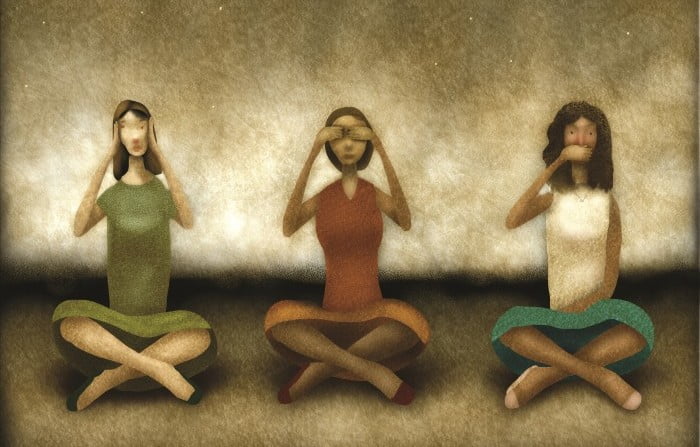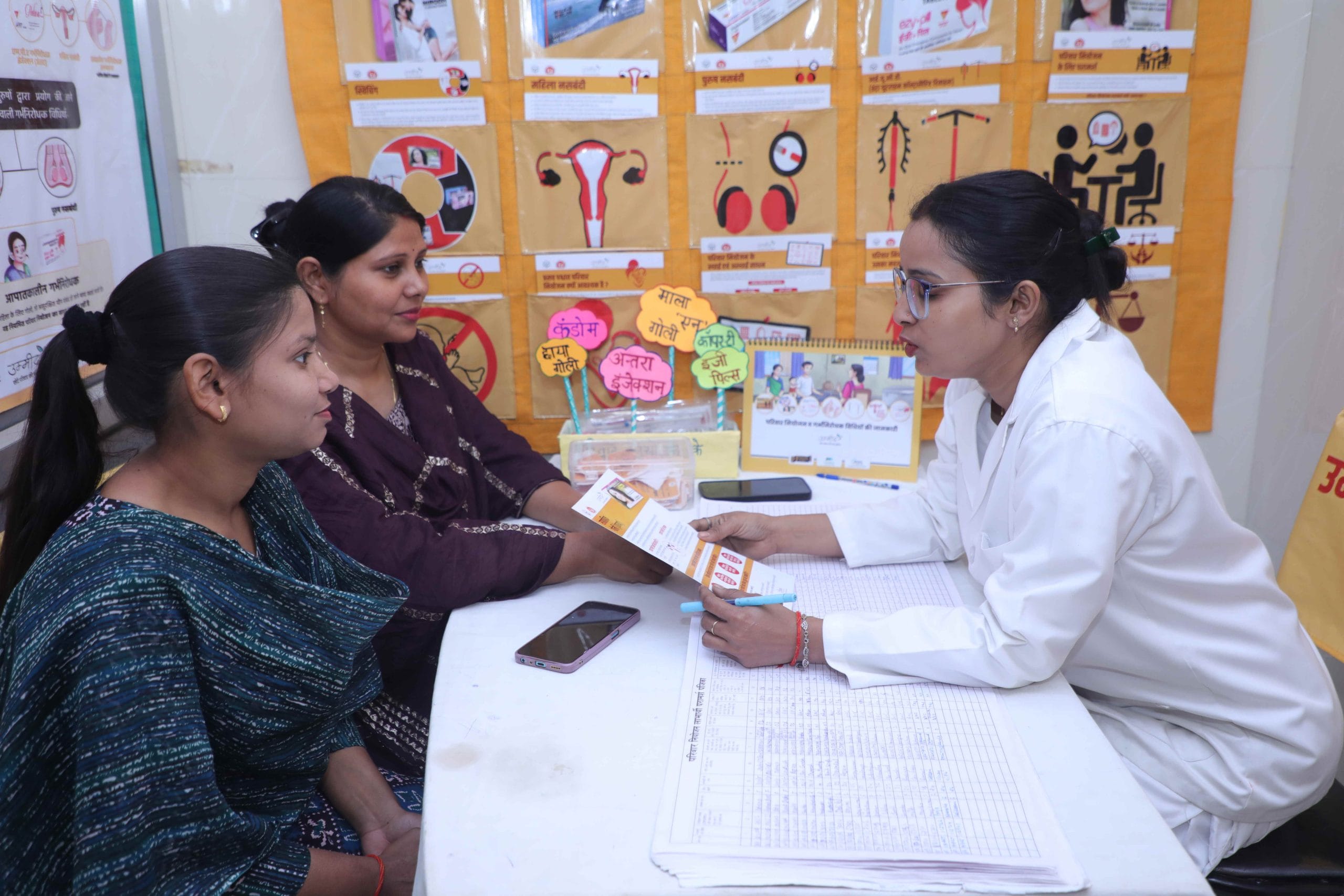Untouchability, exclusion and discrimination are deeply rooted in our system, and patriarchy backed by religious fundamentalism amplifies this, despite literacy and awareness programs that exist in the country. When left unchecked, this influences policies, programmes and public funds for services in terms of access, reproductive health, allocation and choices made available.
If we examine the current state of sexual and reproductive health in India, we find the same premise as above reflected in the course of its design and implementation. Gender issues are not limited to violence (domestic, sexual crimes etc) or markets alone (wage gap, unpaid care work etc) but operate through such everyday norms that contribute to the larger issue of health and equity.
Gender issues operate through such everyday norms that contribute to the larger issue of health and equity.
The best way to dismantle this sly ‘progressive’ society excuses or cultural fabric involving practices around reproductive health, is by bringing strong evidences of intersectional oppression on gender and health into the mainstream. Mostly in this country, reproductive health concerns are of priority only around fertility (or the lack of) and STDs (that affect all genders). So what about menstruation, childbirth, menopause, sexual health and well being? No matter what the skewed statistics from questionable studies say, we have a long way to achieve holistic health rights, not just in India or developing countries but across the world. Some of the examples of how intersectional oppression has manifested itself in present-day society are as below.
1. Exclusionary Practices During Menstruation
Be it ‘Theendari’ in Kerala (Adivasis, Dalits, Feudalist castes and Brahmins who still practice it in varied levels – menstrual huts, sleeping on floors, using different utensils etc) or ‘Chaupadi’ in Nepal, menstruating persons are portrayed as polluted or dirty, citing religious texts. Privilege blinds mainstream discourses to reducing this as a matter of ‘temple entry’ and worship, but the fact remains that these practices, also fuelled by new-age “energy” mumbo jumbo trickles down as isolating menstruators from the society at household and community levels from living their lives in a safe environment.
2. Female Genital Mutilation
Known to be practised in some Islamic and tribal communities across Asia and Africa, and even in countries like Canada and Australia, this ritual still exists in India despite criminalisation of such activities. To avoid confrontation with the religious minorities and their “faith”, such camps often are unreported and even urban educated families are found culpable in this painful violation, all in the name of raising a girl as chaste and devoid of sexual pleasure.
3. Virginity Tests
Practised as ‘Smarthavicharam’ in Brahmin/Namboothiri communities in Kerala where girls/women suspected of premarital sex or sexual activities (including masturbation) were shut in a room and questioned by the elders (mostly men), often leading to excommunication if found ‘compromised’. While these practices are no longer carried in the traditional name, hymen testing (or notoriously called two-finger testing) of to-be brides and rape-victims still exist, shamefully, despite being called unscientific and unnecessary.
Also read: What Are The Taboos Concerning Female Sexuality?
Associating ‘honour’ with hymens has been the mainstream narrative that still remains unchallenged, even in present-day romances and morality. Even in Christian communes, ‘Sunday school’ lessons prior to holy communion instils fear of touching/exploring your body for pleasure as ‘sin’ in young girls, giving them a negative body awareness.
4. Shaming Of C-Sections
Anecdotes from women choosing C-section option being shamed or given bad treatment by healthcare workers in hospitals as a sign of wanting the “easy way” as opposed to the natural mothering that comes from pain are increasingly being shared in urban and rural contexts in India. There have been
The lack of information around safety and appropriate methods of birthing lead to women relying on their doctors to make those decisions for them
The lack of information around safety and appropriate methods of birthing lead to women relying on their doctors (and families, especially their in-laws) to make those decisions for them, even when there are no medical complications. To create
5. Gynaecologists Judging Pre-Marital Sex
Recently, there has been a surge of reports where single women have come forward to share their experiences of being shamed by gynaecologists for being sexually active, using contraception and even menstrual cups. All this being on the basis of ‘moral codes’ and not medical reasons.
6. Lack Of Research Around PCOS
Neglected research and health care around endometriosis, PCOS while the steep rise in IVF clinics and fertility treatments as women across the State are increasingly affected by these reproductive health issues. There are no authoritative studies or conclusive research on dioxins and other environmental toxins that could be causing this, despite such linkages being known since the 80s. With increasing plastic pollution and chemical wastes becoming a toxic menace in most of our cities and towns, lack of attention to remediating these will only lead to more reproductive health issues and short-term fixes that only a few privileged can access.
7. Vaginal Reconstruction And Rejuvenation
Vaginal reconstruction and rejuvenation after natural loosening of vagina post multiple childbirth have become a new fad for ‘keeping husbands/partners’ satisfied, as advertised by many clinics on the rise in India. Sexual pleasure is still limited to vaginal penetration and predominantly met through the male ‘point of view’, and resorting to such
Also read: From Menstrual Taboos To Etiquettes: Or How To Menstruate Politely
What Can We Do?
Sexual and reproductive health equity requires the convergence of social and environmental justice in identifying its priorities as well as the allocation of resources. Countries like India have ratified to CEDAW and UDHR, and both our constitution and judiciary must place these above religious practices in matters of discrimination and violation of rights. With more and more local campaigns, petitions and draft policies emerging from States, these can be useful tools for mobilising to reclaim our rights without rhetoric. Youth in media, healthcare and litigation, as seen in groups like the Red Cycle (Kerala) are coming together to reach out to communities to step beyond the conventional limited understanding of ‘women’s’ realities and represent diverse identities.
The way forward is to screen our legislative policies and governance
Also read in Hindi: समाज की ये कुरीतियां आज भी कर रहीं महिलाओं को प्रताड़ित
Featured Image Source: Reshare It
About the author(s)
Shradha has worked with organizations on national environmental policies, waste management and sanitation in Tamil Nadu, zero waste and climate action in Kerala. She has also worked for the Climate Justice program at Asia Pacific Forum on Women, Law and Development and was the founding member of Women in Conservation and Climate Action Network (WICCAN). Currently she continues to be a campaigner with the Sustainable Menstruation Kerala Collective; who tends to brood with a book on her couch when not at any of the above.





Nice article